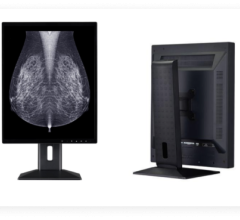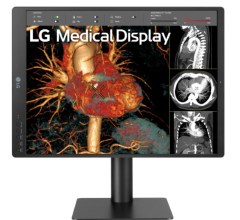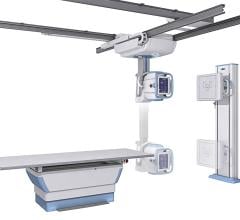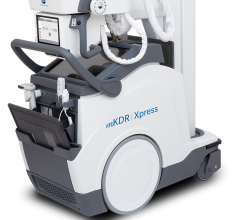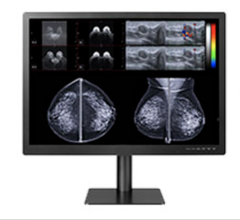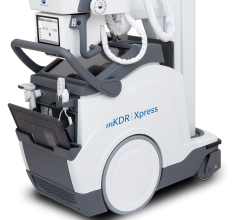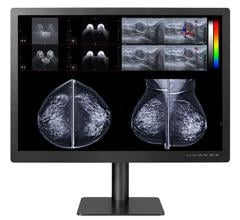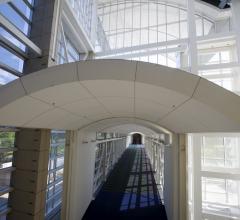Imaging displays, from consumer to medical grade, have come a long way since the days of bulky screens and low resolutions. Today, flat panel displays in the healthcare arena have increasing capacity to offer improved contrast ratios, truer colors, better energy efficiency, high luminance and more. A variety of vendors continue to improve the technology to better display imaging modalities, including computed tomography (CT), magnetic resonance imaging (MRI), X-ray, positron emission tomography (PET), mammography and ultrasound, and to ensure screens remain DICOM (digital imaging and communications in medicine) compliant.
In recent years vendors have been turning to manufacturing light-emitting diode (LED) screens, which offer brighter displays and use less energy than prior technologies such as liquid crystal displays (LCD). LCDs were introduced as a lighter and thinner improvement over older technologies, though they do not emit light and rely on cold-cathode fluorescent lamps (CCFL) to produce backlight. Today’s LED flat panel screens generate less heat, eliminating the need for cooling fans, and do not require voltage inverters like LCDs.
The next step in innovation is considered to be organic light-emitting diode (OLED) screens, which use organic compounds that emit light in response to an electric current. OLEDs can display deep black levels in contrast with LCDs, whose black displays rely on backlight and therefore are not considered true black. The technology also offers faster response times and refresh rates, as well as wider viewing angles and improved brightness. Quality color reproduction is important especially for darker images, so that surgeons and other display users can discern the difference between various tissues and blood vessels. The first OLED monitors for healthcare appeared on the market in 2012, when Sony Medical debuted its line of OLED surgical monitors.
Today’s flat panel displays are also larger in size than before, not only to display higher quality images, but also to display more of them in a singular screen. More vendors are looking to provide bezel-free solutions for radiologists who need to review multiple images side by side but consider the bezel that separates two screens to be obtrusive. While some vendors have come out with thinner bezels to make things more convenient for readers, others have released larger single displays to eliminate multiple monitors altogether.
Flat panel displays also are seeing utilization for multimodality viewing. In 2012, Eizo released its RadiForce RX840-MG, the first 8 MP monitor for multimodality use. It followed that up with the release of its successor, RadiForce RX850, in 2013. The multimodality function allows radiologists to look at images from separate modalities, from digital mammography to MRI, in a single viewing.
Latest Offerings
At the 2013 annual meeting of the Radiological Society of North America (RSNA), many vendors displayed the latest in flat panel displays on the show floor. U.S. Electronics Inc. (USEI) released a new range of LED-backlit diagnostic monitors, including:
• MS25i2/CCL258i2 — 2 MP grayscale and color Totoku diagnostic monitors
• MS35i2/CCL358i2 — 3 MP grayscale and color Totoku diagnostic monitors
• MS55i2 — 5 MP grayscale Totoku diagnostic monitor
• CCL650i2 — 6MP color Totoku diagnostic monitor
• USE1934A — 19-inch DICOM-preset, 1.3 MP touch monitor
All of USEI’s monochrome monitors also include Totoku’s independent subpixel drive (ISD) technology, which allows displays to accept higher resolution output from modality devices. The grayscale MS55i2 and MS35i2 monitors were announced for mammography use in May 2014. A five-year standard warranty is also provided for all diagnostic monitors.
Earlier in March Eizo released two monitors to add to its ColorEdge series. The ColorEdge CG277 and CX271 models are targeted toward those who require the most predictable color in their workflow. They include the features of previous 27-inch ColorEdge monitors and use Eizo’s digital uniformity equalizer (DUE) technology for brightness and color uniformity.
NDS Surgical Imaging (NDSsi) released its Dome S6c diagnostic display in March 2014. The 6 MP LED widescreen model is the latest addition to the company’s S-series line of monitors and can also be used in dual-3 MP format for bezel-free use. Offering both grayscale and color capabilities, the Dome S6c has a native resolution of 3,280 by 2,048 and a 1,000:1 contrast ratio.
In April of this year, Barco launched its MDSC-8258, a 58-inch surgical display designed for 4K-resolution imaging in hybrid operating rooms and interventional suites. Also backlit by LED, the monitor can provide 8 MP of DICOM-compliant images on a single screen.
Also in April, NEC Display Solutions announced it received 510(k) market clearance from the U.S. Food and Drug Administration (FDA) for its 30-inch MultiSync MD302C4 LCD display. The 4 MP widescreen display, intended for diagnostic review applications, features factory-calibrated uniformity control and DICOM grayscale display function for luminance, as well as precise color reproduction with wide viewing angles. The FDA clearance is the first for a NEC MultiSync medical series display with GB-R LED backlight, said Art Marshall, the company’s product manager of professional and medical displays.

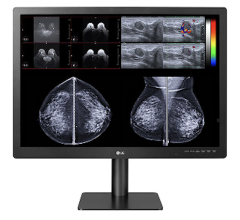
 March 12, 2024
March 12, 2024 
